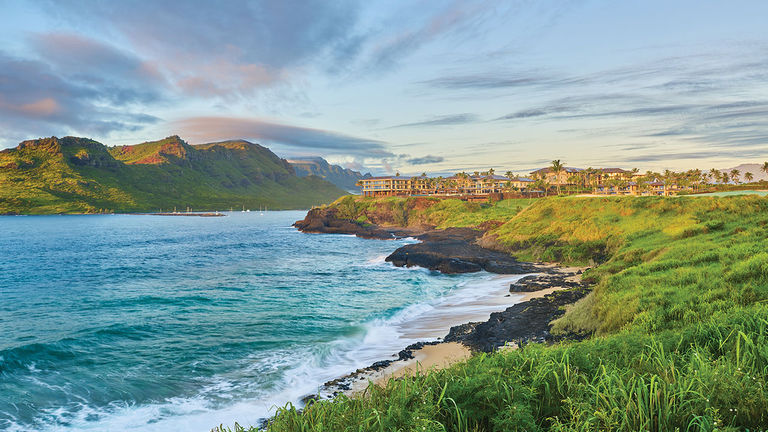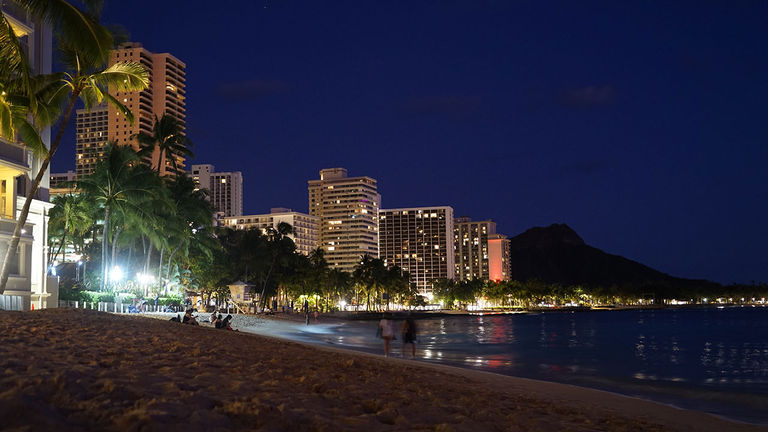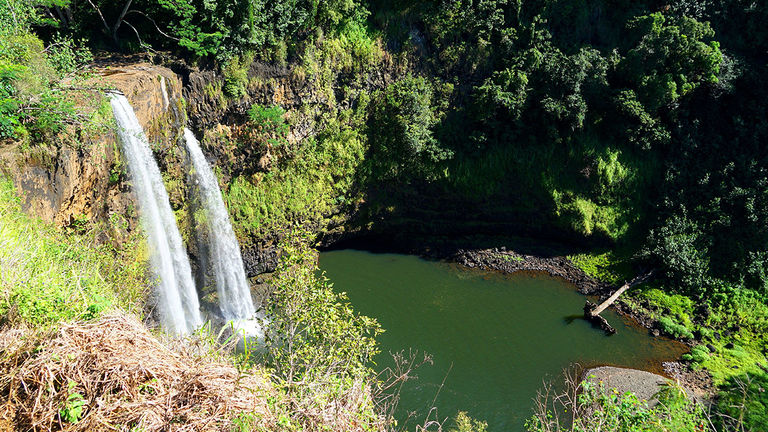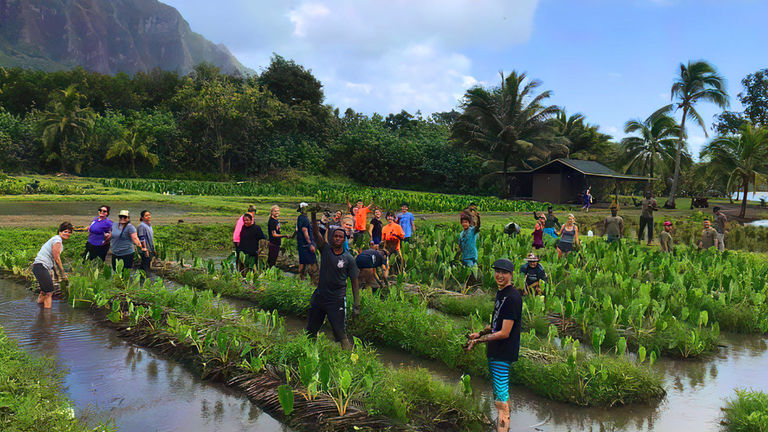Author’s note: During my visit to Kauai four weeks ago, I encountered a tourism destination that appeared largely optimistic about the recent launch of Hawaii’s Safe Travels pretest program, and all of the hotel staff and restaurant and attraction workers I met seemed genuinely happy to have visitors back on the Garden Isle.
What a difference a month makes. On Friday, Nov. 27, Hawaii Governor David Ige granted Kauai Mayor Derek Kawakami’s request to opt out of the state’s pretest program. And effective Dec. 2, all travelers arriving to Kauai must quarantine for 14 days — whether they’ve got proof of a negative COVID-19 test or not.
Since the Oct. 15 launch of Hawaii’s pretest program, the island of Kauai — home to just over 70,000 residents — has reported 58 new COVID-19 cases, according to Dr. Janet Berreman, Kauai’s District Health Officer. Forty-eight of those were travelers: 27 visitors and 20 residents.
"Most of them had a negative pre-travel test, but still came down with COVID-19 here on Kauai,” Berreman said in a statement last week, noting the 10 non-travel cases were examples of increased community spread. “We have not seen sustained community transmission in our county since July, so these cases are very concerning. It is clear that the Safe Travels program is not adequately protecting Kauai from an alarming rise in cases.”
Gov. Ige said Friday he is concerned by the increase in community spread of the virus on Kauai as well as the substantial surge in COVID-19 cases on the U.S. mainland.
"We must protect Kauai residents and visitors and ensure that Kauai’s hospitals do not become overwhelmed,” Ige said in a statement. “Kauai county currently has the fewest number of ICU beds in the state.”
I spoke over the phone last week with Gary Moore, managing director of the Timbers Kauai Ocean Club & Residences, where I stayed during my visit in early November. Moore was hopeful during our conversation last week that Kauai might be able to make use of additional, mandatory post-arrival testing for trans-Pacific travelers in order to avoid opting out of the state’s pretest program entirely. But he acknowledged the status quo of the state’s current pretest program was not at this time sustainable for the Garden Isle.
“Our cases more than doubled in five weeks since we’ve been open, and we had our first death,” Moore said. “We have nine ICU beds on the island, so I think Kawakami is doing what he has to do because he has to protect this island, and it’s different than the other islands.”
Ige administration officials said Friday, “the pre-travel testing program remains in place for all other counties.”
Even so, travel advisors booking vacations to Hawaii Island, Oahu and Maui County should check in regularly at hawaiicovid19.com for updates to the Aloha State’s testing requirements and safety protocols.
Straddling my surfboard at dawn, several hundred yards from shore in Haleiwa, I couldn’t help but think that the island of Oahu looked like it always does.
A smear of rose blossomed along the jagged eastern horizon, giving way to lighter shades of blue and indigo while I bobbed in the gentle rhythm of the Pacific. While there were not many other surfers out yet, I recognized the long, dark braid of a local longboarder I spoke with the day before. He paddled closer and smiled.
“Another beautiful day,” he said, gliding past me without missing a stroke.
I lived in Honolulu for 13 years before moving to the mainland, and I have surfed Oahu’s North Shore at Haleiwa more times than I can count, but nobody there would mistake me for a resident. (My pale, white legs are the first unmistakable indicator of my visitor status.) Even so, on the two days I surfed at Haleiwa during my recent visit, it was the same friendly place it has always been. And after reading so many headlines this summer questioning whether visitors are truly welcome on the Hawaiian Islands, the familiar aloha I encountered in the water — and everywhere else during my visit — came as a bit of a relief.
A Reboot With Strings Attached
On Oct. 15, Hawaii launched its pretest program for trans-Pacific U.S. travelers, allowing those who provide proof of a negative COVID-19 exam — taken no more than 72 hours before departure — to bypass the state’s mandatory 14-day quarantine. Hawaii Governor David Ige enacted the quarantine March 26, saving lives but crippling a tourism industry that in 2019 welcomed more than 10 million visitors who spent $17.75 billion across the islands.
Through the end of September of this year, total visitor arrivals to the state plummeted nearly 72%, according to Hawaii Tourism Authority data.
Hawaii Lieutenant Governor Josh Green — a practicing emergency room physician who headed up the Ige administration’s pretest planning efforts — told me earlier this month that he was pleased with the results of the program thus far, and most of the feedback he’s hearing from residents has been positive. But he acknowledged that state officials have been working regularly on improvements.
Through its first three weeks, nearly 140,000 U.S. visitors took part in Hawaii’s Safe Travels program, according to the Lt. Gov., who said the destination was averaging about 5,000 tourist arrivals a day. In contrast, Hawaii averaged about 30,000 per day in 2019.
“It’s pretty extraordinary to have that level of success,” Green said. “But it’s not perfect.”
Hawaii officials have instituted a randomized and voluntary post-arrival testing program for trans-Pacific travelers to evaluate how effectively the pretesting is at keeping new COVID-19 cases from flying into the islands.
“About one out of 1,000 travelers has been positive for COVID-19,” Green said.
Still, he insisted Hawaii has been the envy of many states across the U.S. mainland.
“When I tell my [mainland] colleagues we have 100 new cases [daily] and that maybe we have one out of 1,000 people coming in positive, they’re shocked it’s that low,” Green said.
 Bookings at the Timbers Kauai Ocean Club & Residences have increased since Hawaii reopened.
Bookings at the Timbers Kauai Ocean Club & Residences have increased since Hawaii reopened.
Credit: 2020 Timbers Kauai Ocean Club & ResidencesGary Moore, managing director of Timbers Kauai Ocean Club & Residences, told me he has also been hearing largely positive feedback about the pretest program from Garden Isle residents.
“Of course, there’s still concern,” he said. “There’s no way to avoid the fact that our case counts are going to go up. The important thing is that we do our part to manage it.”
Moore noted a safe tourism reboot is especially important for Kauai, where visitor spending is critical to the small island’s economy.
“Are there people here who just wish the island would stay closed forever? Yes there are,” Moore said. “But that’s not reality.”
A Firsthand Look
Standing on the lanai of my room at the Outrigger Waikiki Beach Resort earlier this month, I found myself thinking the ocean looked empty.
Although it was a Monday, and there were not really any waves to speak of, the number of surfers just offshore from Waikiki Beach was still a hard-to-believe collection of only a couple dozen people. And the beach itself was dominated by sprawling patches of unclaimed sand, punctuated only occasionally by sunbathers.
 Crowds are few and far between on Waikiki Beach and the surrounding area.
Crowds are few and far between on Waikiki Beach and the surrounding area.
Credit: 2020 Shane NelsonOn an earlier walk down Kalakaua Avenue — a thoroughfare lined with Waikiki high-rises and luxury shopping malls — all the sidewalks were wide open, accommodating only a handful of strollers.
I ran into that same surprising lack of tourists days before on Kauai at popular attractions such as Kilauea Lighthouse and Wailua Falls, where the typically frenzied parking lots were largely empty.
“Now is a great time to come,” said Chris Riccardi, senior vice president of global sales for Outrigger Hospitality Group. “It’s certainly a less-crowded beach experience, you can still have an incredible dining experience, and it’s definitely much less busy on Kalakaua Avenue.”
Over breakfast at Outrigger’s iconic Duke’s Waikiki Restaurant, Riccardi told me the hotel management company’s booking pace is down substantially from the same time last year, but business has improved since Oct. 15.
“A number of weeks ago, we were in the red,” Riccardi said. “We were in the cancellation business. So we’ve gone from negative numbers to positives.”
A number of weeks ago, we were in the red. We were in the cancellation business. So we’ve gone from negative numbers to positives.
Bookings have also ticked up at Timbers Kauai, where managing director Moore told me the property was seeing improving demand for Thanksgiving, Christmas and New Year’s. He noted, however, that business for next year remains a little soft.
“I think a lot of people are still taking a wait-and-see attitude,” he said, mentioning increasing COVID-19 case counts on the mainland. “Or, they are booking now and coming out within days.”
Growing Confidence?
Governor Ige first announced Hawaii’s pretest plan for trans-Pacific U.S. visitors on June 24, saying then he hoped to launch the program Aug. 1. That start date was pushed back to Sept. 1 and later delayed by the governor until Oct. 1 before Ige again postponed it to Oct. 15. All told, the Hawaii governor delayed the launch date for the program three times in three months, damaging the state’s credibility among some travelers who found themselves in a regular pattern of repeatedly rescheduling their trips to the islands.
The destination has since, however, started to slowly earn back the trust of potential visitors, according to many tourism stakeholders, including Kari Mollan, an advisor at Stellar Travel in Bellevue, Wash. Mollan rescheduled some of her clients’ Hawaii vacations as many as three times this summer.
“People were waiting for that first plane to leave to make sure it wasn’t going to shut down the next day,” Mollan said. “Once that plane took off, all of a sudden I had people popping up saying, ‘Hey, can we go?’”
 Tourist attractions, such as Wailua Falls on Kauai, are seeing far fewer visitors.
Tourist attractions, such as Wailua Falls on Kauai, are seeing far fewer visitors.
Credit: 2020 Shane Nelson
Mollan told me she booked three different Hawaii trips for clients in four days earlier this month, including one slated to take place in November. Now fielding far more Aloha State inquiries, Mollan said an increase in the number of trusted testing partners — such as Walgreens and Kaiser Permanente — from which Hawaii will now accept COVID-19 exam results has also helped her sell the destination.
“Before, there was always the question of ‘Have I taken the right test? Is this the one Hawaii wants?’” Mollan said.
Ray Snisky, group president of Apple Leisure Group Vacations (ALGV), agreed that Hawaii is beginning to earn trust back among consumers, and he said ALGV’s bookings to the islands have increased every week since Oct. 15. He told me he expects that momentum to build with more visitors on the ground in the islands.
“There is a little bit of catch up Hawaii will have to do, because there are other destinations that have been open longer,” Snisky said. “But I think that will happen fairly quickly once everyone sees people in Hawaii having fun and experiencing resorts. There will be a lot of things online and posted on social media about protocols. So I see that acceleration happening over the next 30 days.”
As of Nov. 24, however, Hawaii has changed its pretest program rules, mandating that trans-Pacific visitors arrive in the islands with proof of a negative COVID-19 test result in hand to avoid the 14-day quarantine. Safe Travels Hawaii travelers were initially allowed to show up without those pretest results, but they could then provide proof of a negative test after arriving to bypass the quarantine.
The recent shift in policy has forced at least one of the pretest program’s original partners — CVS Health — to rethink its initial agreement with the Aloha State.
“On average, test results are typically available in three to four days but currently may take longer due to the surge in COVID-19 cases and increased testing demand during the holiday season,” said Tara Burke, a spokesperson for CVS Health, on Nov. 24. “We cannot guarantee a lab test result within the 72-hour window that the state requires and are asking travelers to Hawaii to make other testing plans.”
There is a little bit of catch up Hawaii will have to do, because there are other destinations that have been open longer.
Caring for Hawaii
Pulling weeds out of a Kualoa Ranch loi kalo (taro patch) was more difficult than I figured.
“It’s harder than it looks, right?” Frank Among, Kualoa’s director of sales and marketing, told me earlier with a laugh.
Grinning down at me, Among looked on while I struggled with a stubborn weed rooted in the shallow canal feeding the taro patch. Among was providing me with a sneak peek at some of the voluntourism activities Kualoa will offer visitors through the state’s newly launched Malama Hawaii program. He told me cultural education has also been a longtime component of the nature preserve’s many movie tour and adventure activity options.
“Educated customers and visitors are the best,” he said.
Malama means to care for and nurture in Hawaiian, and earlier this month, the Hawaii Visitors and Convention Bureau (HVCB) launched the Malama Hawaii package program in conjunction with a number of hotels across the islands, offering guests a third, fourth or fifth night free in exchange for taking part in a voluntourism activity.
“Sharing how and why we care for our island home is natural to the people of Hawaii,” said John Monahan, president and CEO of the HVCB, who noted participating visitors can also take part in activities such as beach cleanups and native tree reforestation efforts. “This is not simply a time-constrained promotion for this year. It reflects a desire of the people of Hawaii to attract mindful travelers who are invested in leaving a positive impact on the places they visit, and it sets the brand direction for Hawaii tourism for the year ahead and beyond.”
 Visitors can take part in a range of voluntourism programs and earn free nights through the Malama Hawaii program.
Visitors can take part in a range of voluntourism programs and earn free nights through the Malama Hawaii program.
Credit: 2020 Kualoa Ranch Private Nature ReserveAmong said Kualoa has been welcoming about 700 customers per day under its new distancing and safety protocols, a figure that is off substantially from the 2,500 daily guests the nature preserve averaged before the pandemic. But he told me Kualoa’s movie tour and adventure activity business has been busy enough since Oct. 15 to consider expanding the number of days it is open each week.
The nature preserve’s Malama Hawaii voluntourism options, meanwhile, have attracted partnerships with nearly 30 hotels, including Outrigger Hotels & Resorts, he said.
And Paul Toner, general manager at the Kauai Marriott Resort & Beach Club, said guests there who have booked the hotel’s Malama Hawaii package have described cleaning up Kalapaki Beach in front of the property as “really rewarding.” Toner also said when local folks see visitors helping to collect plastic and garbage at Kalapaki, it can make a transformative impression.
“There was always concern in the past from some groups that we had too many visitors on the islands,” Toner said. “But when residents see visitors lend a helping hand, it’s changing perceptions.”
The Details
Hawaii State Department of Health
www.hawaiicovid19.com
Hawaii Visitors and Convention Bureau’s Malama Hawaii program
www.gohawaii.com